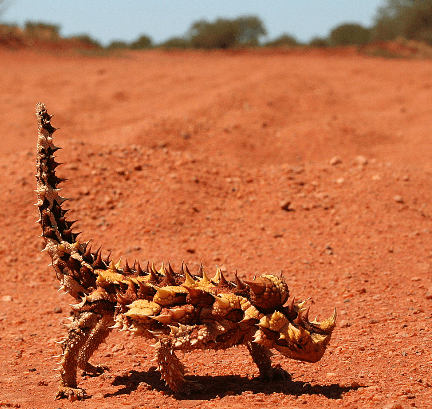
Looking horror-movie fierce, the thorny devil is just one of the amazing inhabitants you’ll find in the Gawler Ranges of South Australia. The only species of the genus Moloch, this colorful character can survive up to 20 years, but only grows to about eight inches. He dresses in camouflaging shades of browns and tans that match his desert environment; and they change from pale colors in warm weather and to darker shades in cold. The fascinating little dragon also has a spiny “false head” on the back of its neck that it presents to potential predators by dipping its real head forward. Those scary spikes cover the entire upper side of the body to protect against predators.
This little devil joins variety of other spectacular lizard species as well as koalas, kangaroos, emus, seals, dolphins, a host of endemic birds and so much more on the Eyre Peninsula, home to the Gawler Ranges. If you like all creatures great and small, this wilderness region might be just the ticket. A diverse terrain changes from semi-desert to arid to eucalypt woodland, while the age old volcanic landscape is spectacular with its gorges and weathered rocky outcrops. In the midst of this landscape is Gawler Ranges Wilderness Safaris’ camp provides a unique adventure in the Outback. From a colony of wild koalas to spectacular Lake Gairdner, a large salt lake that, when in flood, is considered the third largest salt lake in Australia, to a day swimming with sea lions at Baird Bay, Gawler Ranges offers you a glamping experience with luxury safari tents set in the stunning wilderness.
To encounter the thorny devil and his companions, grab a pack and explore our new President’s Pick: Adventure Australia!
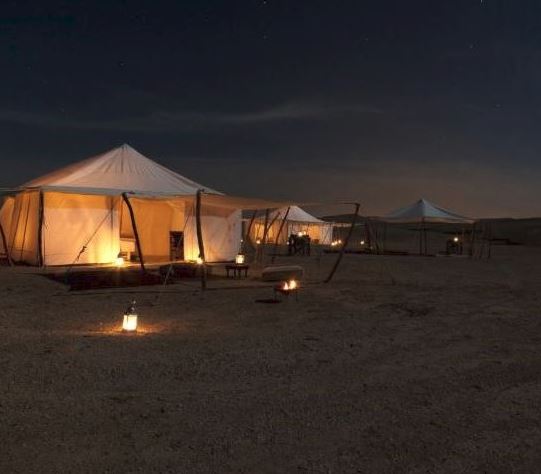
Camping has certainly evolved since many of us were kids. But the joy of camping has not lost its power. The freedom it offers you to go wherever you want and set up camp.
Today’s camping, however, has taken on somewhat more glamourous feel. Indeed, it is often called glamping now, and has become the standard for many outdoor enthusiasts who want to take along some extra bit of luxury and comfort. What better way to end an adventurous day trekking mountains, exploring local villages or quad biking through the desert than to be able to retreat to a private tent with lavish linens, antique furnishing and world-class cuisine?
Now glamping is possible in Morocco. Yes, you can take your luxury camp with you into the rugged Atlas Mountains or the vast southern desert or even over to the coast, if you like. Scarabeo Camp, for example, offers charming oriental-inspired tents that can be set up in the most beautiful corners of Morocco. Dotted among the landscape, the spacious and comfortable tents are decorated with unique pieces and locally crafted artwork. Explore the Morocco no one else knows on our brand new President’s Pick: Morocco.
https://bigfive.com/tour/presidents-picks-morocco/
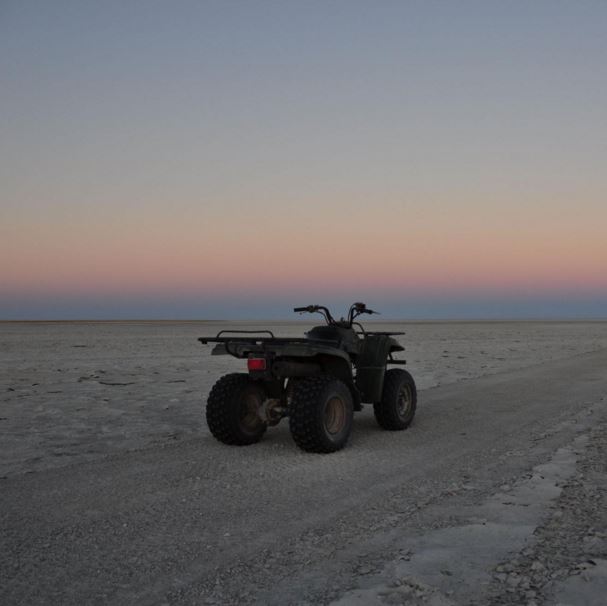
There are few experiences more mesmerizing than lying out in the wilderness under a living planetarium with ever-evolving stars that crowd the night sky, horizon to horizon. The vastness of unpolluted night skies is astounding to some, and take on a spiritual dimension for many. Some of those stars look so close that it seems you could reach up and touch them. There are fewer places left on earth where this is possible.
The Makgadikgadi Salt Pan in Botswana is just such a place.
Indeed, this enormous salt pan in the middle of the dry savanna of northeastern Botswana is one of the largest salt flats in the world. During the season, take a quad bike out across this startling and expansive lunar landscape. Here, everything seems more… the silence more intense, the wildlife more unusual, and the traditional Bushmen community more ancient.
Go fly camping at Camp Kalahari’s Xau Xai, where you can sleep in a dome tents or out in the open; visit with charismatic meerkat colony; walk with Zu/’hoasi Bushmen trackers; search for ancient stone tools; and explore by quad bikes or on foot.
This phenomenal experience can be added to your southern Africa safari such as our Zambia & Botswana: Uncharted Footsteps.
The Star Wars movies reached cult status decades ago. So it isn’t surprising that the debut of the newest episode – Star Wars: The Force Awakens – broke box-office records worldwide.
One fan, an 11-year-old boy, was determined not to miss this global event. His family were set to travel with Big Five to Peru at the same time the movie premiered in the United States. His disappointment could have started out this family’s long-planned journey on a sour note.
Big Five and their travel advisor were able to arrange for the family to see the opening showing in Lima, Peru the following day – in English and 3D!
Whether you see it in a theater in Lima, Jaipur or Cape Town, participating in an everyday event such as going to a movie in a new country and with a different culture can be fun experience.
Where is the most unusual place you have seen a movie? Tell us on Facebook.
This is the season for fun and reflection. We know you are likely out shopping, attending holiday parties, and gathering with family and friends. We thought it would be fun to take a look at where Big Five has been in 2015; so, here are some of the locations and activities we have enjoyed this year as we worked to bring you the best and the latest.
Where did you go this year? Tell us on Twitter or Facebook #ididit2015.
We wish you all safe journeys in 2016.
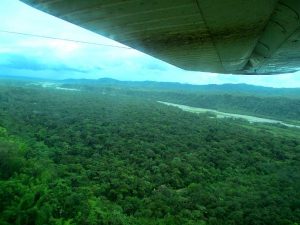
An aerial view of the Amazon Rainforest in Ecuador from Deborah’s trip.
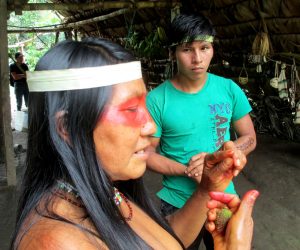
A Waorani woman explains the use of some native plants found in the Amazon.

A Waorani guide talks about ancient trees of the Amazon

Life along the Amazon River in Ecuador

Once the exclusive hunting reserve of the kings of the Wodeyar Dynasty, the former rulers of the Kingdom of Mysore, the lush, rich forests of Nagarhole National Park, near Karnataka, India, became a wildlife sanctuary in 1955, a national park in 1983, and a tiger reserve in 1999.
Long before any of that, the Kadu Kuruba tribes shared the forest with tiger, leopard, wild dog, bison, elephant and many others. Kadu means forest Today they live on the fringes of the forest but their tribal spirit remains deep within. Orange County resorts works to help the Kadu Kuruba sustain their traditions by providing a platform for native and regional artists, to perform and celebrate the art forms of their ancestors.
At Kabini, the vibrant social tapestry of the local Kadu Kuruba tribe is celebrated and activities are themed around the local culture and customs. Guests are welcomed to visit a tribal village and experience the hospitality of the Kurubas. Every alternate evening, a troupe of Kuruba tribal dancers performs their traditional dance around a campfire, to the accompaniment of two wooden drums and one wind instrument. This dance is traditionally performed during festivals & times of strife and is an invitation to their gods to join them and bless the occasion.
Rock singer Bono said during a concert in Madrid days after the terror attacks there, “We must remember, to beat the monster we cannot become a monster.”
Whether you like his music or not, that comment made sense. Yet, here we are years later having the same discussion after the horrific events in Paris. We deeply mourn the loss of human life, but we must remember that challenge. It offers a chance to build and grow stronger.
We stand in unity with the people of France – we are with you, we cry with you, we rage with you, we will heal with you, and, eventually, we will laugh with you. This may be an opportunity to find our unified vision and speak in a unified voice to say, “We are still standing. We will keep getting up no matter the obstacle.”
George Santayana famously said in 1905, “Those who cannot remember the past are condemned to repeat it.” We seem to be in the same place 110 years later. When does it end? Politicians and world governments are saying the right things – that we must fight back.
Yes, we must fight back, however, who are we fighting? Do we even know? What exactly is ISIS? Can we contain it or defeat it?
Has anyone actually thought about the end game? What is the ultimate vision for our world beyond erasing terrorism? The unified vision cannot start or with defeating ISIS. It must be about preventing another group like it from taking its place. And until we recognize that, there will always be another group. There is no one easy answer, but we must certainly start by addressing the challenges that are creating the disenfranchised youth in troubled areas around the globe.
With Hitler, with Mussolini, with Amin, with Milosevic, we knew where to take our fight. That no longer exists with groups such as ISIS. They are more fluid and not easily definable. Yet we seem to be stuck using strategies from the past that no longer apply.
I suggest we take a lesson from the people of Colombia. For decades, they had their own terror nightmare in the form of drug cartels with elected leaders, who were either in collusion with them or faced death if they resisted. It took decades for Colombia to finally understand that the solution was not in defeating the powerful cartels, but in dealing with the farmers who grew the drugs. They were on the lowest rung on that ladder, yet they carried all the burden. Not until their needs were starting to be addressed, was real change possible.
Answers will come when we begin to find that lowest rung in ISIS, the one that carries all the weight; and begin to speak to their problems.
In these dark days, it is important to remember that there are signs of positive changes in powerful fashion such as the landmark elections in Myanmar. Aung San Suu Kyi, on the eve of her party’s victory, said, “It’s important to implement the people’s will in a peaceful manner for the sake of the country.” And, the positive new direction India is heading in under Prime Minister Narendra Modi. A few days ago, Prime Minister Modi spoke to 60,000 followers chanting “India” at Wembley Stadium. His message was equally simple – England and India as partners, must take a zero tolerance approach to terrorism and find the root causes together.
What do these leaders have in common?
An ideal that an overwhelming majority of their citizens can believe in – that the sake of the country and its citizens must rise above political gain.
We will never discover who we are fighting until we begin to solve the issues that engender the troubled youth of the world to join them in the first place. That should be our unified vision.
Ashish Sanghrajka
President
Answer: Zipaquirá’s Salt Cathedral, one of the most notable achievements of Colombian architecture.
The impressive underground Salt Cathedral was first built in 1954 in salt mines that had been used for centuries. But structural problems and safety concerns led the authorities to close the sanctuary in 1990. The present church was built between 1991 and 1996 and is about 200 feet below the original shrine. It uses hallways in inactive parts of the salt mines. The result is interlinked rooms of different sizes that contain 14 small chapels representing the stations of the cross. Each station has a cross and several kneeling platforms carved into the salt structure.
The largest area is the actual cathedral, which is 59 feet tall and about 246 feet in length. It is said to be able to hold 8,400 people. The central cathedral’s cross is more than 52 feet high. The salt cathedral attracts visitors from around the world, with as many as 3,000 on Sundays. The complex includes an interesting museum of mining, mineralogy, geology and natural resources, and is located in the town of Zipaquirá about 30 miles north of Bogota. Zipaquirá’s Salt Cathedral is included in many of our Colombia journeys such as Colombia’s Colonial Cities, Coffee Culture & Coast.
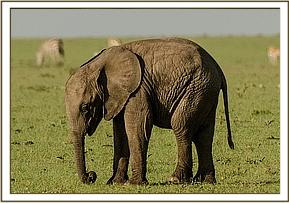 Young Roi was just 10 months old when she arrived at The David Sheldrick Wildlife Trust elephant orphanage. She had been spotted in the Olare Orok Conservancy in the Maasai Mara, scared and confused beside her dead mother, killed by ivory-seeking poachers. Roi was still with the rest of the herd, but the milk-dependent little calf would likely not survive with the group if she could not get enough milk. She was rescued by the Sheldrick team. A year later, Roi has adjusted well to her new life with other orphans at the sanctuary, and may one day return to the wilderness. But there is little doubt that she will remember that awful day for a very long time.
Young Roi was just 10 months old when she arrived at The David Sheldrick Wildlife Trust elephant orphanage. She had been spotted in the Olare Orok Conservancy in the Maasai Mara, scared and confused beside her dead mother, killed by ivory-seeking poachers. Roi was still with the rest of the herd, but the milk-dependent little calf would likely not survive with the group if she could not get enough milk. She was rescued by the Sheldrick team. A year later, Roi has adjusted well to her new life with other orphans at the sanctuary, and may one day return to the wilderness. But there is little doubt that she will remember that awful day for a very long time.
Elephants are intelligent, and share many of the same emotions and cognitive behavior as humans. They grieve for lost loved ones. They feel fear, joy and empathy. And, they remember!
Elephants’ memory is key to their survival. They recognize more than 200 different individuals, necessary when females depend on one another to help raise their young. Like our human family, elephants form complex bounds in their society. When two elephants meet they emit a “contact appeal.” If they recognize each other’s appeal, they respond and approach. If, however, they do not, they become agitated and defensive. We do not yet know just how long elephants can retain memories, but it has been shown that a recording of a dead animal can attract the attention of its relatives and even its descendants.
Memory has its downside, however, such as when a matriarch leads her family to a place where once good feeding grounds have been taken over by humans for crop cultivation or other uses. When it comes to human-elephant conflicts, elephants most always lose.
But there are people working to save these gentle and intelligent creatures such as the team at Sheldrick elephant orphanage. We are proud to support the orphanage by fostering elephants in honor of our guests. An after-hours visit to this sanctuary to meet some of the rescued residents is included in many of our custom Kenya journeys.
Please take a moment to watch this touching new video from Sheldrick. And remember… ivory = iworry.
Visit iworry.org to learn more.
Dear family and friends,
We are back in the modern world at least for a bit after being out of touch while on our adventure to Tierra del Fuego and now in Patagonia’s Tierra del Fuego National Park in Southern Chile. If you don’t see photos in this blog you will shortly being receiving them separately.
In any case we were on the ship Stella Australis from Ushuaia and successfully landed on Cape Horn which was a major objective! We had 80 kph winds, snow, rain, and ice, climbed the several hundred meters from the sea to the Cape Horn Monument and explored the island of theCape for about an hour before the weather drove us back to the ship. We then went to Wahliaia Bay, a major nature preserve and former indigenous Indian Colony (Yaghans). We were not able to stop off at Aguila Glacier because of severe weather but the Captain pushed a bit to get us to Magellan Island to observe the Magellan Penguin population.
We disemabarked our ship at Puntas Arenas and drove 6 hours to Torres Del Paine National Park. We have taken three hikes, the two yesterday were a bit more tough for yours truly but we saw magnificent views and wildlife – large numbers of condors, guanaco (llama relative), rhea (ostrich relative), fox, many beautiful birds, etc., etc.
This afternoon and tomorrow we do another hike and then are going to do a glacier via boat on the largest Patagonian lake. Weather largely determines our activity. In general we have sun, 40’s F, but HUGE amounts of wind which typically blows between 60 – 80 kph. This morning’s hike activity was cancelled while we were on our way because of high winds – don’t know exactly but were told up to 130 kph. Needless to say we could lose Marie-Jo in a wind like that! We try again this afternoon. Will try to catch up again if we find internet access. Next stops are Lima, followed by Sacred Valley, Machu Pichu, Cusco, Quito, and the Galapagos.
We hope you are all well and much love to you all,
Grandpa and Grandmere
We’ve all heard stories about the hole-in-the-wall joint that turns out to be a diamond in the rough. Well, Bangkok has its Jok’s Kitchen, a tiny, back-street restaurant deep in the Chinatown section of the city. Indeed, you have to walk through the crowded alleyways of a vegetable market to reach the small house restaurant. You would not recognize it as a fine dining establishment from the outside unless someone told you. But fine dining it is, its many fans proclaim.

It is known locally as the One-Table restaurant, even though today it has grown to five tables. But it still feels like you are in someone’s home. There is little in the way of decoration, but as you will see, none is needed. The food here speaks for itself. Indeed, you will need at least a two-month lead time. Yes, reservations are made on a two-month, maybe even three month, basis for dinner; and a mere two to three weeks for lunch.
This unpretentious restaurant, according to one reviewer, “exemplifies the very best in Chinese cooking, with a wide range of classic Chinese delights…”
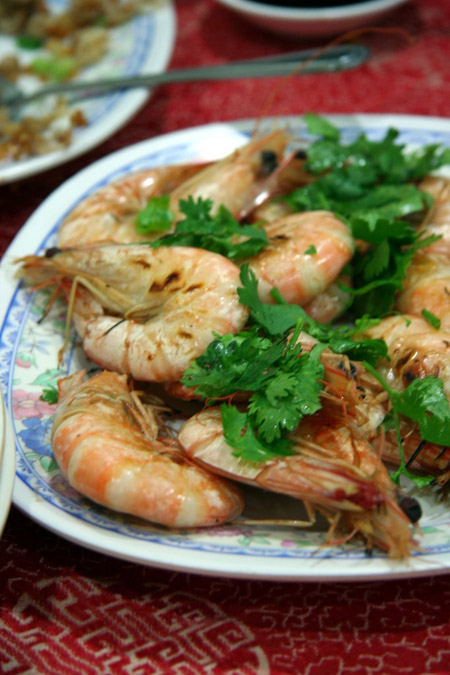
Primarily known for its seafood, you can expect dishes such as Surat-thani sea crab, shelled; spicy lemongrass salad with prawns; vegetables in oyster sauce with canned abalone; and taro mousse with ginkgo nuts on the bed of sweet sticky rice for dessert.
If you are a foodie, or even if you’re not, you will not want to miss out on an opportunity to experience this culinary and cultural adventure. Plan ahead if you want to visit Jok’s Kitchen on any of our Thailand journeys such as our Thailand – A Natural Adventure.
Friends and Family,
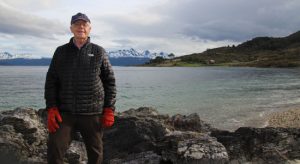 Arrived in Ushuaia, the Southern most city in the world surrounded by the snow covered Andes Mountains by both Chile and Argentina and situated on Beagle Channel. It is very beautiful while the city is quite rustic and reminds us of a Swiss ski village chalet hamlet. Our hotel is on the Channel with beautiful views everywhere. Tomorrow we
Arrived in Ushuaia, the Southern most city in the world surrounded by the snow covered Andes Mountains by both Chile and Argentina and situated on Beagle Channel. It is very beautiful while the city is quite rustic and reminds us of a Swiss ski village chalet hamlet. Our hotel is on the Channel with beautiful views everywhere. Tomorrow we 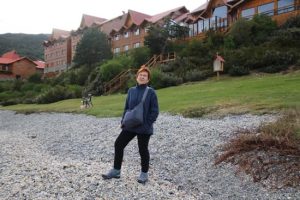 venture into Tierra Del Fuego National Park, first by bus and then by train. At the end of the day we board our ship for four days of travel to Cape Horn and then through the Magellan Passage stopping at glaciers and islands along the way to see the various flora and fauna (penguins, sells, walrus, etc.). I’m not sure about communications on the boat but will certainly try. Weather is expected to be rain, 20 – 30 mph winds, and in the 30’s/40’s. We have our Dramamine at the
venture into Tierra Del Fuego National Park, first by bus and then by train. At the end of the day we board our ship for four days of travel to Cape Horn and then through the Magellan Passage stopping at glaciers and islands along the way to see the various flora and fauna (penguins, sells, walrus, etc.). I’m not sure about communications on the boat but will certainly try. Weather is expected to be rain, 20 – 30 mph winds, and in the 30’s/40’s. We have our Dramamine at the 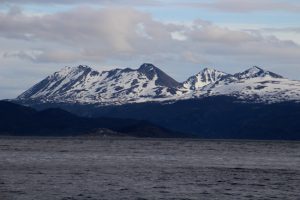 ready and we are hopeful that the weather permits the boat to stop at Cape Horn so that we can climb the actual hill and do photo ops at the steel statue marking the juncture of the Atlantic and Pacific Oceans – fingers crossed. I am sending two photos either through this repaired blog or separately to you. Once again my apologies for the multiple emails. Big Five assures me that they are working on it.
ready and we are hopeful that the weather permits the boat to stop at Cape Horn so that we can climb the actual hill and do photo ops at the steel statue marking the juncture of the Atlantic and Pacific Oceans – fingers crossed. I am sending two photos either through this repaired blog or separately to you. Once again my apologies for the multiple emails. Big Five assures me that they are working on it.
We hope that you are all well. Gazelle Marie-Jo’s ankle has mended well but we are being careful as we proceed needless to say.
Much love to you all!
Dr. Jones and Gazelle
Enjoying the magnificent views of Iguassu Falls
Hola familia y amigos! We have safely and successfully arrived in Buenos Aires. Flights went well, a little over nine hours from Atlanta so we arrived early. The airport is much smaller than we thought it would be. Bags arrived, Customs and Border Control went smoothly, and our guide Sonia was waiting for us. We are at the Alvear Palace Hotel (tres chic), getting settled in, and then will explore a bit of the city. Love to all! GP/Dad
You might remember the bad-tempered, whirling cartoon Tasmanian devil, but that is as far from Tasmania’s temperament as cabbage is from a giraffe. Indeed, this Australian state that seems to have been flung off to the south of the mainland, has a curiously sweet nickname, Tassie, and an interesting story to tell.
Did you know, for instance, that Tassie was the site of the establishment of the first environmental party in the world? Or, that nearly 45% of the state, which includes 334 smaller islands, is protected in reserves, UNESCO World Heritage Sites and 17 national parks – and all wrapped up in a space about the size of West Virginia or Ireland?
This is a nature lover’s dream come true. And, for walkers…. Well, if you have a walker in your family, don’t expect him or her to rush home anytime soon once they’ve landed in Tassie.
Walking the remote reaches of this island rewards you with unbelievably dramatic landscapes and ridiculously stunning marine views. There is no better way to connect with this natural wonderland than with your own two feet.
Four of the eight multi-day “great walks of Australia” are here. There are walks to suit all interests and abilities – walks to mountain peaks, through temperate rainforests and along truly pristine beaches. There are heritage and city walks, and walks to discover Tasmania’s food and wine.

Who would like to walk the Freycinet in Tasmania?
Walking the Freycinet is one such walk. On the east coast, this four-day trek takes you through the pink granite Hazard Mountains and lush coastal forests, and some of the purest of white-sand beaches, including the world-renowned Wineglass Bay. You follow the footsteps of the Oyster Bay Tribe, hiking the same ancient bush tracks that have been used for 30,000 years. Add a walking experience to your Tasmanian adventure such as our new Australia’s Ancient Landscapes. Note: By staying at Saffire Freycinet, you are helping to support Save the Tasmanian Devil.
Family and friends, we are on our way to Argentina. I will try to keep you posted, along with photos, through the Big Five blog. It would appear that photos will be tough because the size limit is quite small for their site. we will see. Love, Grandpa/Dad

Cape Malay “Dhaltjies”
I’ll bet at least once in your life someone cautioned you against eating and talking at the same time. But what about walking, talking and eating? If you like to walk, meet new people and love food…. we have a treat for you!
Anthologists have long explored connections between what we eat and who we are. Much about a country and a culture is expressed through its cuisine. We have a delightful foodie experience in the lovely city of Cape Town, South Africa. What makes foods distinctive from region to region usually originates in the home. But you can’t just wander into someone’s house and pick up a spoon.
So on this experience, you walk the streets of Cape Town, stopping to taste a mixture of traditional South African dishes found in the city’s street foods. You visit some artisanal food and coffee shops. You talk to cooks, chefs and food fixers as you taste some South African soul food such as pap – a porridge that is a staple of the traditional Bantu people. It’s served with samp (corn kernels) and bean stew, and vetkoek, fried dough bread common in Afrikaner cookery. You’ll also sample falooda, a traditional Muslim rose milkshake, and gourmet bunny chow for a taste of Indian cuisine. Taste bobotie pies, a modern take on the Bobotie dish, traditional with both the Cape Malays and the Afrikaners. Try koesister, Cape Malay spicy doughnut “dhaltjies”/chilli bites. Artisan chocolate is made from pure unroasted cocoa beans and combined only with sugar – suitable for vegans. Enjoy meebos – a local sweet made from dried apricots.

Bobotie Pies
This is something you will want to tell mom about – just don’t tell her you were eating and talking at the same time. This food experience can be incorporated into a South Africa journey that includes Cape Town such as South Africa – Cape Town & Eastern Cape.
In most regions of Europe and North America graffiti continues to be seen as destructive vandalism and is largely stigmatized. Not so in Buenos Aires! Indeed, quite the opposite is true. The vibrant Argentine capital has become one of the world’s centers for street art with thousands of murals decorating houses, schools, businesses, public buildings and churches. Some of these works are even funded by the government, and the artists are recognized and respected.
Big Five offers its guests to the city an intimate look at the legendary street art during a three-hour graffiti tour in the company of an anthropologist guide. Guests see another side to the city as well as meeting artists and visiting local galleries, gaining cultural insights into the political origins and modern-day issues of Buenos Aires.
Big Five’s goal in using specialist guides such as this is to insure that guests return home with a deeper, richer understanding of a place. You can explore this artistic side of Buenos Aires on one of our Argentina journeys such as our 16-day Argentina Adventures.
Here are some beautiful, colorful examples:

A new mural in Caballito, Buenos Aires.
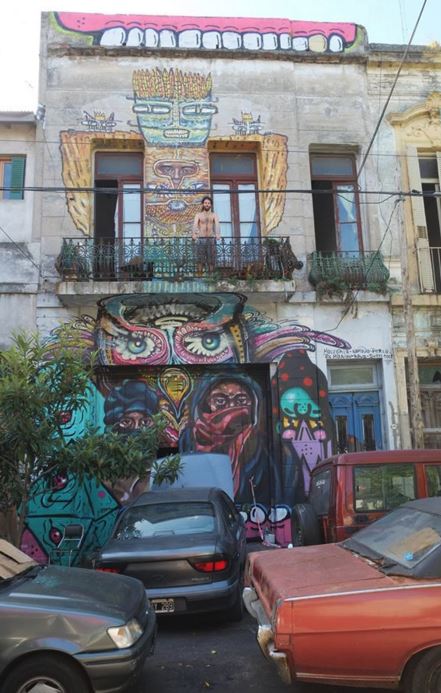
New collaboration on the front of a mechanic workshop in La Boca, Buenos Aires. Foto/photo: Ketil Blom
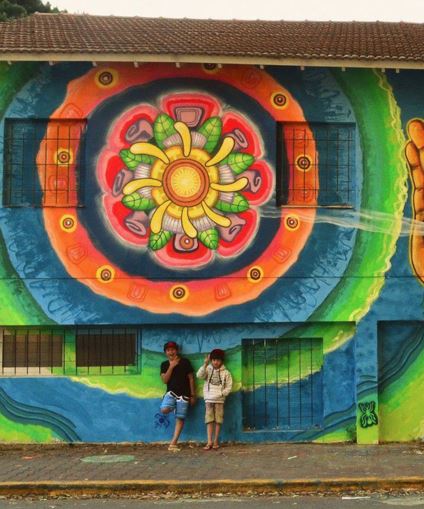
A mural at a school in Pinamar, Argentina.

When our babies are born, 18 years until college seems like forever. But the reality is that when it comes to traveling with your kids, the time spent dwindles down to something under a year. Work, school, outside activities all eat away at our schedules and our plans until we are left with something like 252 days – plus or minus – of total vacation time with our children before they leave for college.
Discussions at the recent Family Travel Association Summit (FTA) in Montana brought up the fact that family travelers living in North America are taking less time off today than we did 40 years ago! That is truly remarkable considering that we once believed technology and new methodologies were going to free up time for the average worker. Many factors go into this reduction in time away from work and school.
At the same time, studies show that both parents and children are taking notice of this tendency. Today, they are searching out ways to counteract this trend to spend more time together, both at home and on the road. They are looking for journeys that recognize the difference between merely family tolerant and genuinely family focused.
One of the most vital messages to come out of the FTA summit is simply this – time spent together with family on vacations not only changes a child’s life… it actually changes a child’s brain! The additional stimulation of new places, experiences and people increases the brain’s ability to map information – regardless of the age of the child. Even infants benefit from this process and it enhances future learning.
Surveys of children report that their best memories may not be what we adults would expect. It may not be standing on the Great Wall of China; instead, it might be time spent giggling over the funny-looking noodles or seeing how the wall is crumbling in places. It’s all interconnected and builds as each new experience is added.
As our children become citizens of the world, they also gain the power to help change that world as they grow into it. That is why Big Five is a proud founding member of the Family Travel Association and embraces its mission to spread the word that the importance of family travel should not be underrated as a tool to help us save the planet.
So where will you go and what will you do with your kids? The key lesson – go now.
Remember, 252 days.
Visit bigfive.com/kids for ideas and more.

Are you one of us? Many of us never grew up… entirely. We still have a fondness for fun and for new experiences. We never forgot our silly side or how to play. And when we travel, we keep a sharp eye out for opportunities to indulge the kid in us. Want to play?
Glacier hop by helicopter
New Zealand
One of the most fun and thrilling flying experiences at any age has to be helicopters. Explore South Island’s dramatic glaciers, high country sheep and cattle farms, spectacular Mount Aspiring National Park. Experience luxurious high country hospitality by spending a night at Minaret Station Alpine Lodge, set at the head of a spectacular glacial valley within the untouched landscapes of the Southern Alps. This exceptional lodge offers a rich menu of other experiences, and can be added to your South Island adventure such as on our Natural New Zealand program.
Get muddy in a volcano
Colombia
Getting muddy isn’t just for children. Adults visit luxury spas around the world for the experience of being covered in mud. Go to the next level – sit in a Mud Volcano! You can treat yourself to a thermal mud bath at the Totumo Mud Volcano, northeast of Cartagena. Both restorative and fun, you climb up a 15-meter/49-foot stairway along the side of the volcano to the crater. Here the sulphur, phosphates, magnesium and other elements bubble through the mud, and the mud’s density means you will float on the surface. Then, head to the freshwater Totumo Lake nearby for a cleansing dip. Try out this unique mud bath on our Volcanos of Latin America adventure.
Play Tarzan in Thailand
You will not want to miss Thailand’s original zip line canopy experience in Chaing Mai. Up here in the treetops, you come into contact with rare wildlife in the towering trees of an old growth forest. You may hear a family of primates marking their territory with amazing vocalizations. You fly through the treetops along 7 km/4.4 mi of zip lines that includes Asia’s longest single ‘flight’ (800m/2625ft). Travel to 33 stations, some suspended up to 70m/230ft above the valley floor. In addition to enjoying the forest canopy, bird life and other wildlife, your treetop adventure helps support a conservation project to re-introduce gibbons monkeys back into their native forest! Go for a swing in Chaing Mai on our Thailand – A Natural Adventure.
Go on safari… at night… on the back of an elephant
South Africa
Camp Jabulani offers an extraordinary night safari on elephant back. Under the stars amidst the night sounds and dwellers, you savor this truly original experience and you sweep the potent battery-powered spotlight across the landscape. Feel the swaying rhythm of the elephant as you move through the inky dark beneath a sky cluttered with the stars of the Milky Way. You may catch a glimpse of glittering eyes in the surrounding bush as you move through the forest. You return to the stables and witness firsthand the mutual respect and genuine fondness between the elephants and their tenders. One thing is certain – you cannot help but be changed forever by your encounter with Camp Jabulani’s exceptional elephants. You can incorporate this remarkable experience in you Custom South Africa adventure.
Ride bikes with your Maasai friends
Tanzania
Overlooking the Great Rift Valley and Ngorongoro Forest, Gibb’s Farm in northern Tanzania was established as a coffee farm in the late 1920s. It imparts a sense of well-being in a warm, rustic luxury environment. The farm is deeply rooted in African culture and community. From here your family can explore the back roads of the local village by bicycle in the company of Maasai, or take a mountain bike day trip to explore rural Tanzania. You can also delve deeper into the world of traditional Maasai on intriguing hikes such as the walk through the Ngorongoro Forest to learn about herbs commonly used by tribal healers in the farm’s healthcare center and throughout Tanzania. A visit to Gibbs Farm can be included in a Tanzania exploration such as on our 15-day Kenya & Tanzania journey.